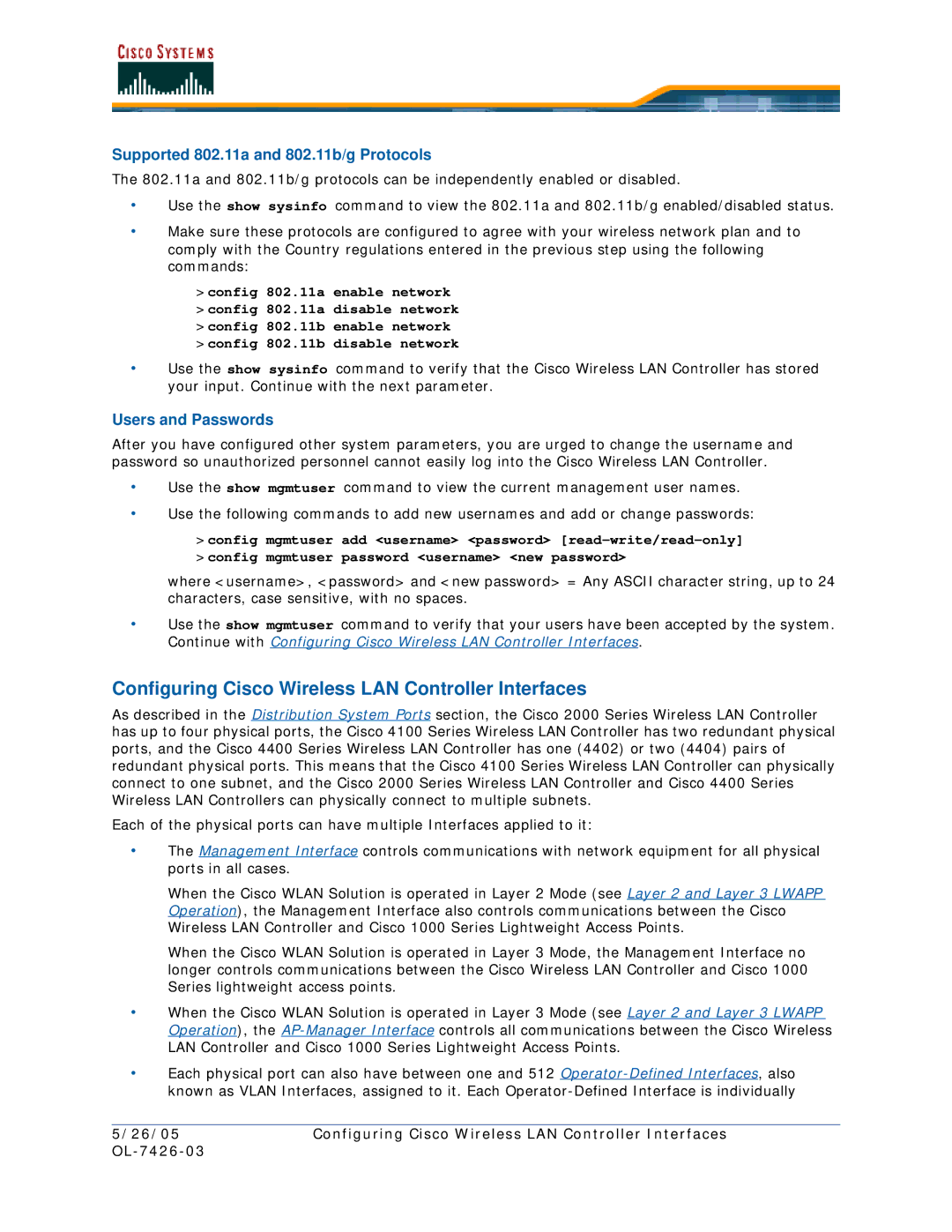
Supported 802.11a and 802.11b/g Protocols
The 802.11a and 802.11b/g protocols can be independently enabled or disabled.
•Use the show sysinfo command to view the 802.11a and 802.11b/g enabled/disabled status.
•Make sure these protocols are configured to agree with your wireless network plan and to comply with the Country regulations entered in the previous step using the following commands:
>config 802.11a enable network >config 802.11a disable network >config 802.11b enable network >config 802.11b disable network
•Use the show sysinfo command to verify that the Cisco Wireless LAN Controller has stored your input. Continue with the next parameter.
Users and Passwords
After you have configured other system parameters, you are urged to change the username and password so unauthorized personnel cannot easily log into the Cisco Wireless LAN Controller.
•Use the show mgmtuser command to view the current management user names.
•Use the following commands to add new usernames and add or change passwords:
>config mgmtuser add <username> <password>
where <username>, <password> and <new password> = Any ASCII character string, up to 24 characters, case sensitive, with no spaces.
•Use the show mgmtuser command to verify that your users have been accepted by the system. Continue with Configuring Cisco Wireless LAN Controller Interfaces.
Configuring Cisco Wireless LAN Controller Interfaces
As described in the Distribution System Ports section, the Cisco 2000 Series Wireless LAN Controller has up to four physical ports, the Cisco 4100 Series Wireless LAN Controller has two redundant physical ports, and the Cisco 4400 Series Wireless LAN Controller has one (4402) or two (4404) pairs of redundant physical ports. This means that the Cisco 4100 Series Wireless LAN Controller can physically connect to one subnet, and the Cisco 2000 Series Wireless LAN Controller and Cisco 4400 Series Wireless LAN Controllers can physically connect to multiple subnets.
Each of the physical ports can have multiple Interfaces applied to it:
•The Management Interface controls communications with network equipment for all physical ports in all cases.
When the Cisco WLAN Solution is operated in Layer 2 Mode (see Layer 2 and Layer 3 LWAPP Operation), the Management Interface also controls communications between the Cisco Wireless LAN Controller and Cisco 1000 Series Lightweight Access Points.
When the Cisco WLAN Solution is operated in Layer 3 Mode, the Management Interface no longer controls communications between the Cisco Wireless LAN Controller and Cisco 1000 Series lightweight access points.
•When the Cisco WLAN Solution is operated in Layer 3 Mode (see Layer 2 and Layer 3 LWAPP Operation), the
•Each physical port can also have between one and 512
5/26/05 | Configuring Cisco Wireless LAN Controller Interfaces |
|
